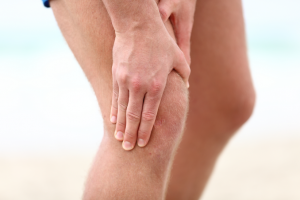Catching Lyme disease alone is already an unwanted and complicated concern. To make matters worse, if left untreated for too long Lyme disease can lead to the development of lyme arthritis.It is especially important for doctors to be vigilant when it comes to examining patients who show symptoms of joint pain after being affected by Lyme disease.
According to the Johns Hopkins Arthritis Center, approximately 60% of improperly treated Lyme disease patients will develop some manner of joint pain. Most commonly the knee is the main affected area. Both small and large joints having the potential for swelling. Typically the frequency and severity of swelling and pain will decrease over time. However, approximately 10% of ill-treated patients will develop chronic arthritis.
Cause of Lyme Arthritis

A tick bite can potentially lead to Lyme disease through transmission of the bacterium Borrelia burgdorferi. Being bitten by a tick does not guarantee Lyme disease, but if the tick is infected by the bacterium then the chances increase. If the bitten individual develops Lyme disease, they should immediately seek medical attention.
After the development of Lyme disease, there is potential for the bacterium to invade the joints. This leads to inflammation in the surrounding tissue and can eventually wear down the cartilage of the joints. It is not always obvious to the affected individual that they have Lyme disease, let alone Lyme arthritis. This makes it especially important for medical practitioners to be attentive to patients with joint problems in areas where ticks are common.
Prevention and Treatment

The symptoms of Lyme arthritis often do not appear until the later stages of Lyme disease. Within the first few weeks of being bitten, patients feel flu-like symptoms, stiff neck, headaches, among other symptoms. But those who develop Lyme arthritis don’t usually notice joint pain for months or even a year after being bitten.To help avoid the potential for letting Lyme disease progress into Lyme arthritis look for the following symptoms if you’ve been bitten by a tick:
- Rash near the insect bite
- Aching, redness or swelling in one or more joints especially the knee
- Fever
- Lethargy
- Headache
While these symptoms are helpful indicators, sometimes they never develop or go unnoticed by the affected individuals. One of the best ways to prevent Lyme arthritis is to be aware of the potential symptoms. Once you are familiar with the possible effects, then you will better be able to inform your doctor. Lyme arthritis most commonly develops because it goes untreated for too long. If you and your doctor catch the symptoms early on, then the chances decrease.
If you have been bitten by a tick recently, or think you might be developing Lyme disease it is essential that you contact your medical professional right away.Those who live in the Kentucky area, and want to know more about the treatment available for Lyme arthritis, should give Louisville Orthopaedic Specialists a call today at (502) 212-2663. To learn more about Lyme disease and its symptoms in women, read our previous blog post here.

Recent Comments